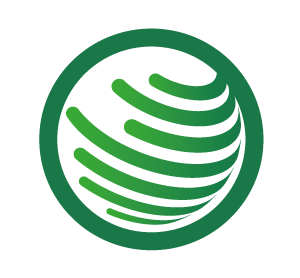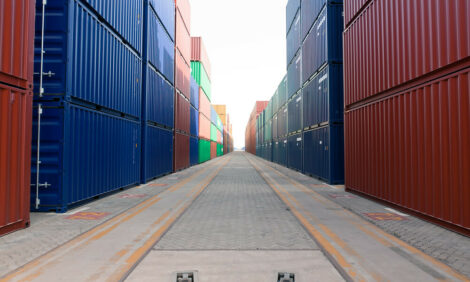



US producer prices flat in June despite tariff effects
Soft services demand offsets rising goods inflation pressuresUS producer prices were unexpectedly unchanged in June as a tariff-driven increase in the cost of goods such as communication and related equipment was offset by softening demand for travel services, reported Reuters.
The weakness in the cost of services, if sustained, offers hope that a tariff-induced flare-up in inflation will not lead to broad-based price pressures, allowing the Federal Reserve to resume cutting interest rates later this year.
Still, the increase in producer goods prices reported by the Labor Department on Wednesday was the latest indication that the sweeping tariffs announced by President Donald Trump in April were starting to lift inflation. The government said on Tuesday the Consumer Price Index increased by the most in five months in June, with tariff-sensitive categories posting solid rises.
The data support economists' expectations that the US central bank will leave its benchmark overnight interest rate in the 4.25%-4.50% range at its July 29-30 policy meeting. Minutes of the Fed's meeting last month, which were published last week, showed only "a couple" of officials said they felt rates could fall as soon as this month.
Trump has demanded the Fed start lowering borrowing costs now. Bloomberg reported on Wednesday that Trump was likely to fire Fed Chair Jerome Powell soon, spooking financial markets, but the president later told reporters he wasn't planning to do so.
"The inflation threat is alive and very real and if this does not put a Fed rate cut in July out of the question, then nothing will," said Christopher Rupkey, chief economist at FWDBONDS. "Fed officials are unlikely to push for interest rate cuts unless they are trying to curry favour with the president."
The unchanged reading in the PPI for final demand last month followed an upwardly revised 0.3% rise in May, the Labor Department's Bureau of Labor Statistics said. Economists polled by Reuters had forecast the PPI would rise 0.2% after a previously reported 0.1% gain in May.
The BLS said PPI data from February through May was revised "to reflect the availability of late reports and corrections by respondents."
In the 12 months through June, the PPI increased 2.3% after advancing 2.7% in May. Monthly goods producer prices increased 0.3% after gaining 0.1% in May.
More than half of the broad-based increase in goods prices was due to a 0.3% advance in wholesale goods excluding food and energy. These so-called core goods prices rose 0.2% in May.
They were boosted last month by a 0.8% jump in prices for communication and related equipment following a 0.4% rise in May. Household furniture costs surged 1.0% after climbing 0.7% in the prior month. Home electronic equipment rose 0.8% after being unchanged in May. Passenger car prices rebounded 0.3%.
Some of the increases in wholesale goods prices mirrored similar rises in the CPI goods components.
Wholesale food prices increased 0.2%, with the cost of beef soaring 0.8%. Egg prices, however, dropped 19.8%. Energy prices rose 0.6%, lifted by a 1.8% increase in the cost of gasoline.
"The 3.8% annualized increase in these goods prices over the last three months is the fastest since March 2023 and may be a sign that either input cost increases are forcing companies to raise prices or the protection offered by tariffs is allowing companies to raise prices," said Conrad DeQuadros, senior economic advisor at Brean Capital.
Stocks on Wall Street were trading mostly lower. The dollar fell against a basket of currencies. Longer-dated US Treasury yields rose.
Weakness in services
Wholesale services prices slipped 0.1% after increasing 0.4% in May. A 4.1% decline in wholesale prices of hotel and motel rooms accounted for more than half of the drop in services. The cost of airline fares decreased 2.7%.
An uncertain economic outlook because of tariffs has resulted in consumers pulling back spending, including on holiday travel. The number of foreign tourists visiting the US has declined, partly in response to trade tensions and the Trump administration's immigration crackdown.
The spending cuts have also spilled over to businesses, constraining manufacturing. A separate report from the Fed showed factory production edged up 0.1% in June after increasing 0.3% in May.
"Continued uncertainty around where trade policy will ultimately land is preventing many businesses from taking on new capital expenditures, unsure of the policy and underlying demand environment," said Tim Quinlan, a senior economist at Wells Fargo. "It is difficult to imagine a breakout in manufacturing while these uncertainties persist."
Trump last week announced higher duties would come into effect on August 1 for imports from a range of countries, including Mexico, Japan, Canada and Brazil, and the European Union. Economists expect these tariffs will keep goods prices elevated through the end of the year, though slower services price growth could soften the blow.
Portfolio management fees rebounded 2.2% in June. There were also increases in the prices of machinery, equipment, parts and supplies wholesaling, furniture retailing as well as apparel, jewelry, footwear and accessories retailing.
With the PPI and CPI reports in hand, economists estimated the core Personal Consumption Expenditures Price Index increased 0.3% in June after rising 0.2% in May. Core PCE inflation was forecast to have advanced 2.8% on a year-over-year basis last month after rising 2.7% in May.
The core PCE price index is one of the inflation measures tracked by the Fed for its 2% target.
"The inflationary impact of tariffs will likely increase in coming months," said Bill Adams, chief economist at Comerica Bank. "Even so, weak business pricing power may continue to blunt their effect on inflation."



